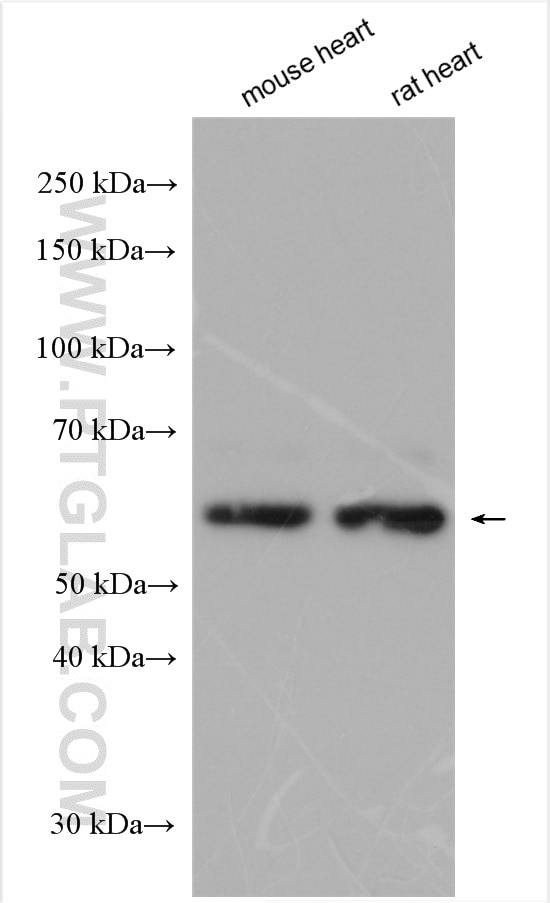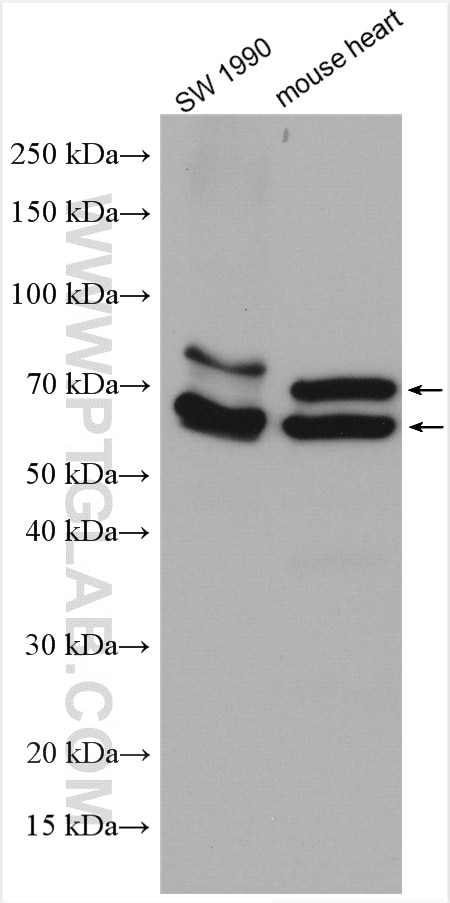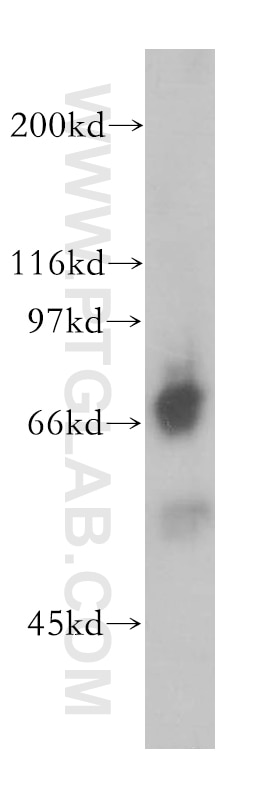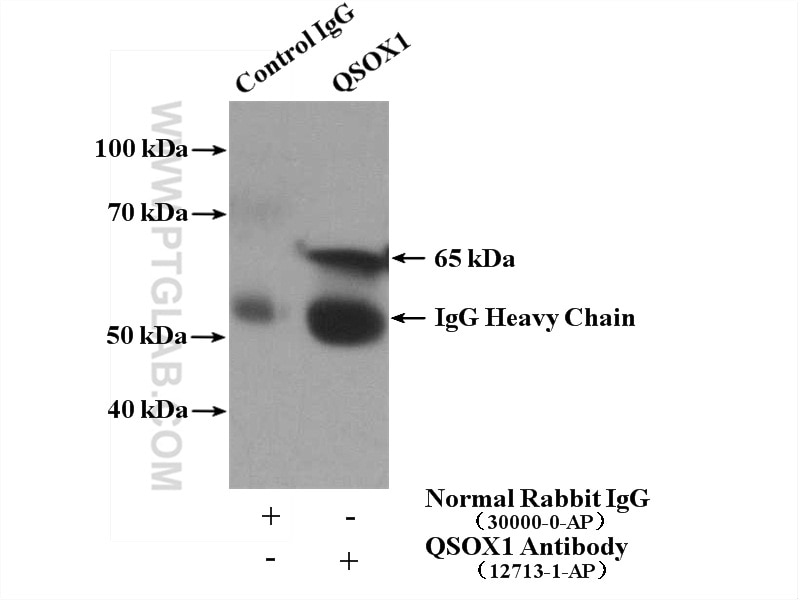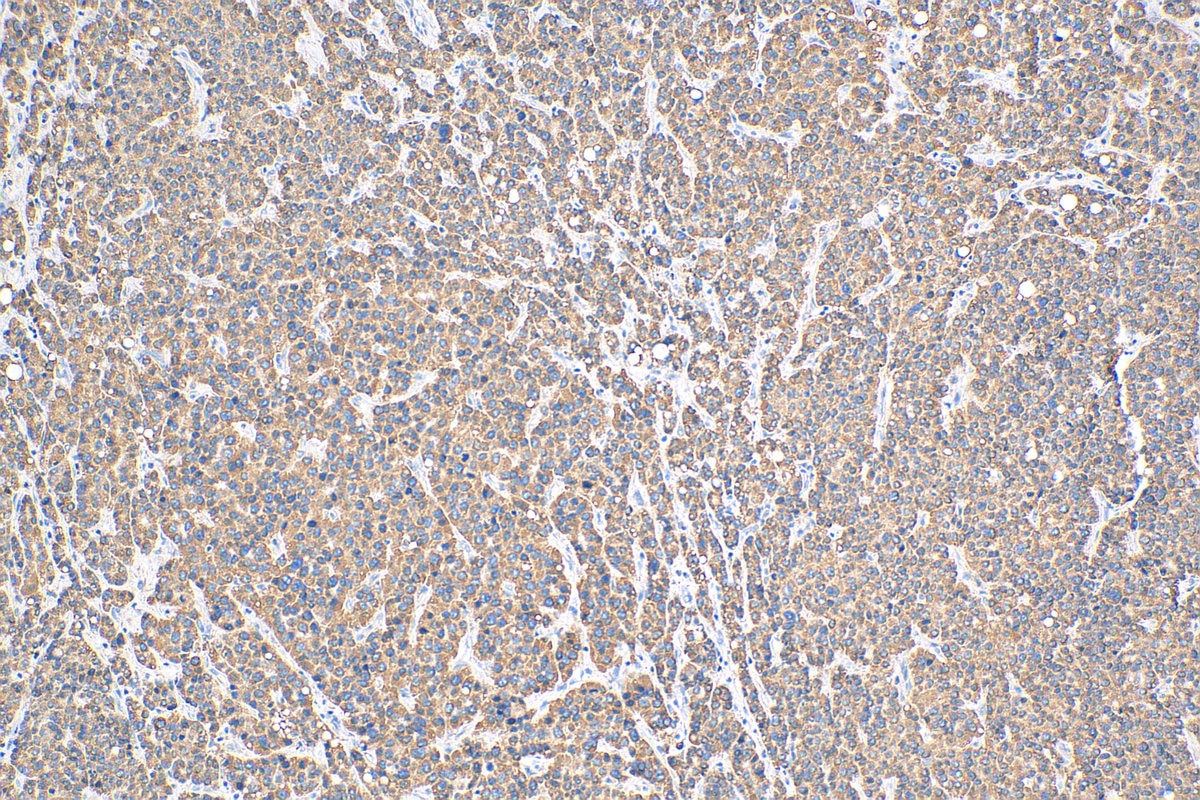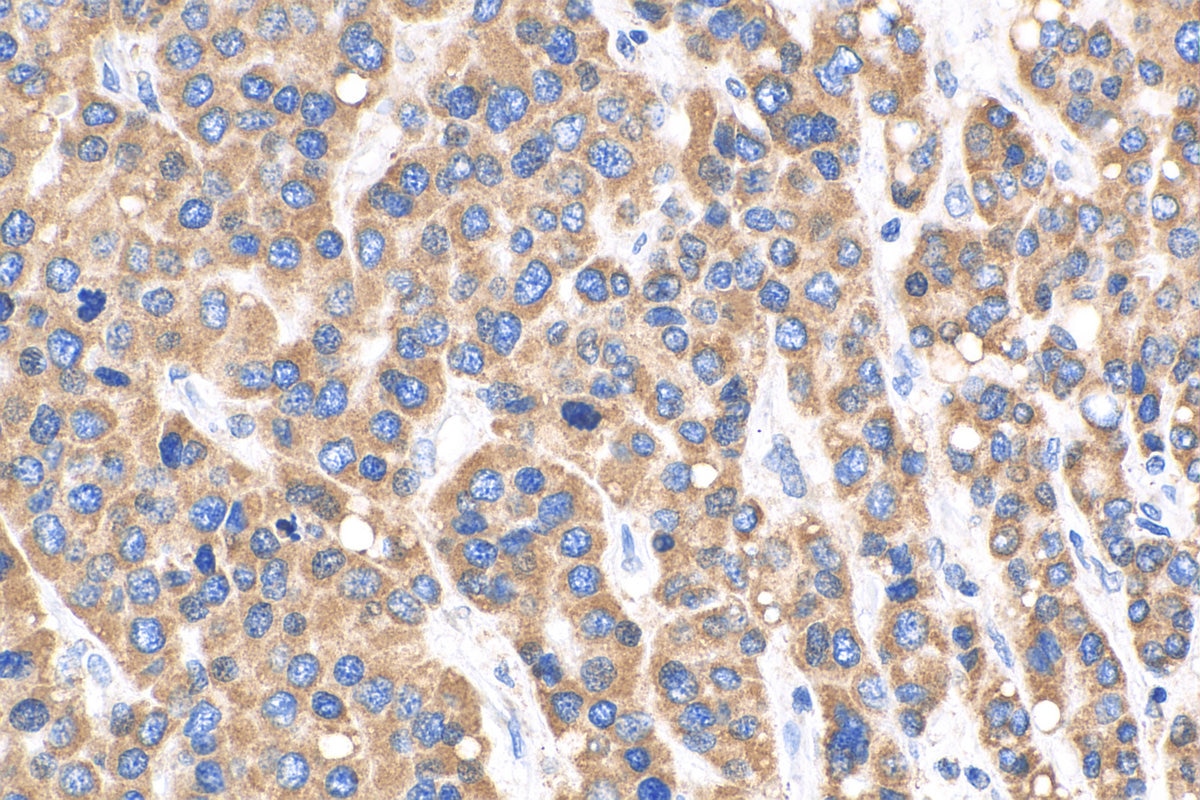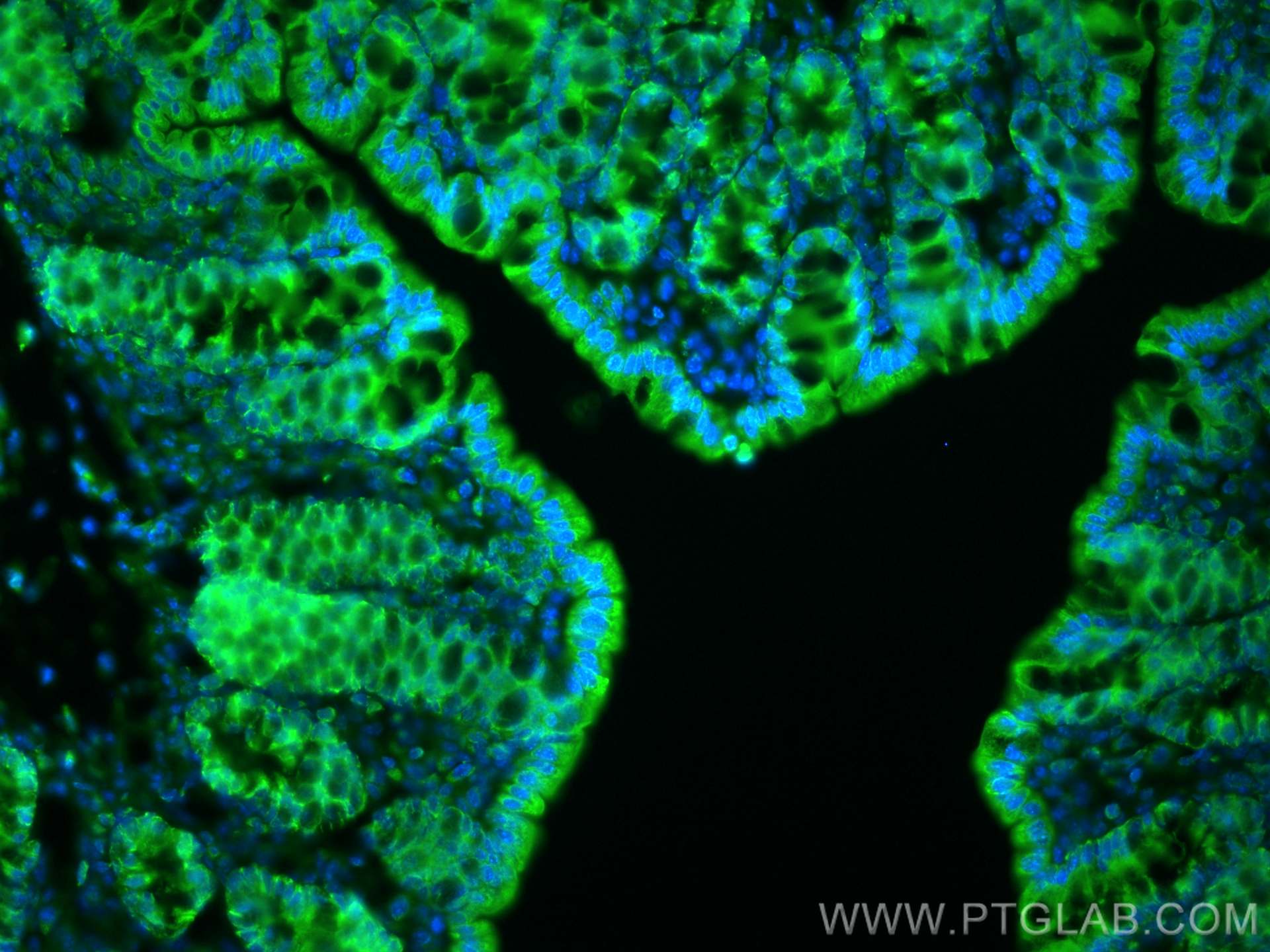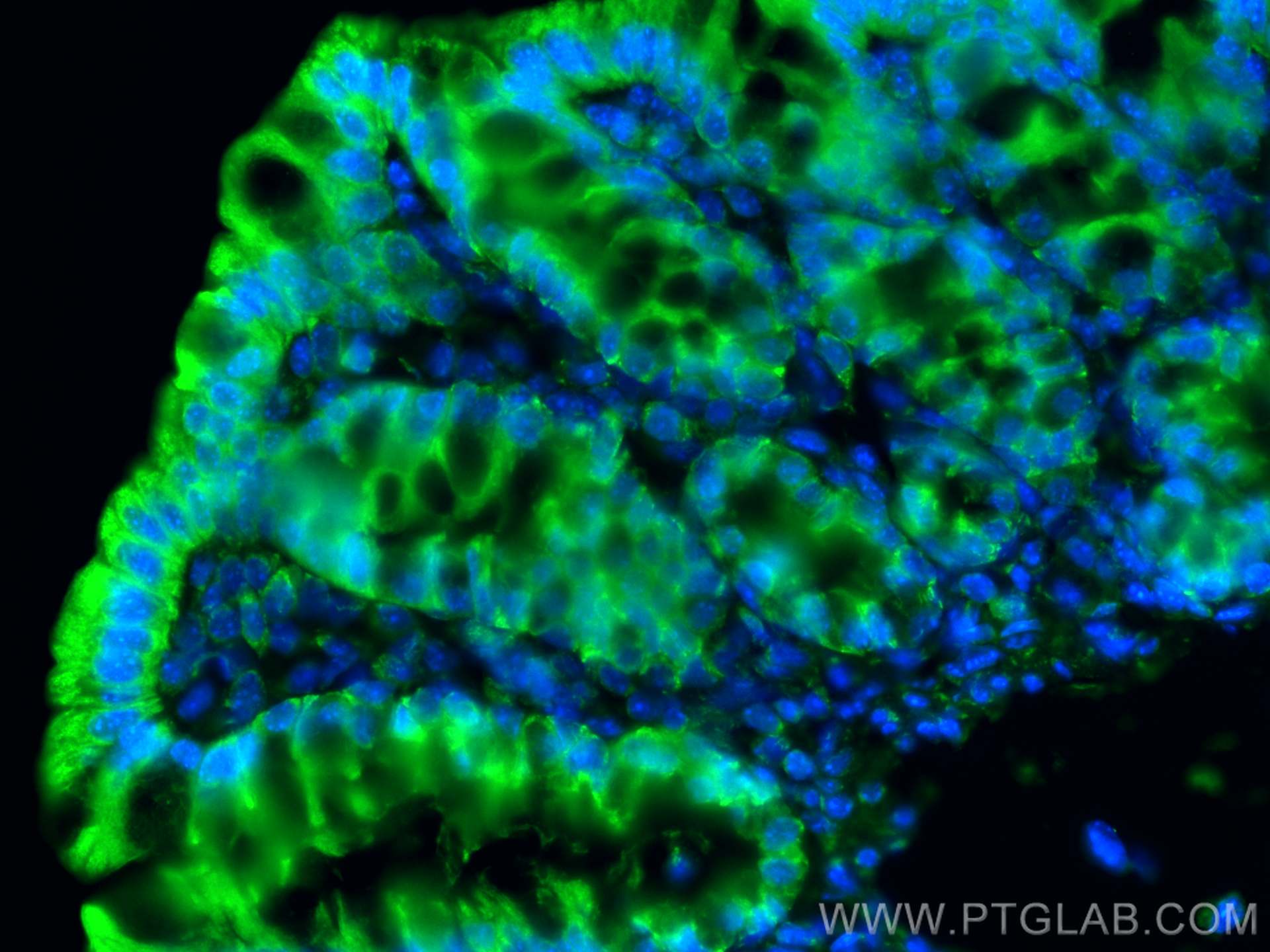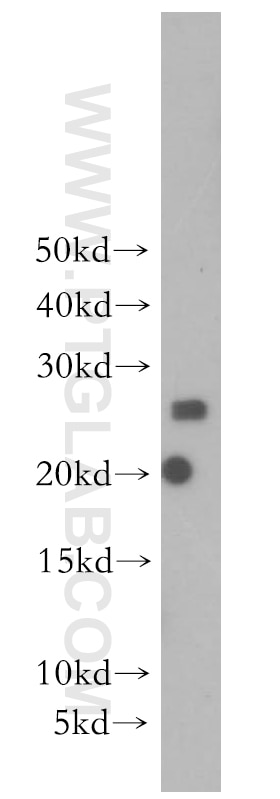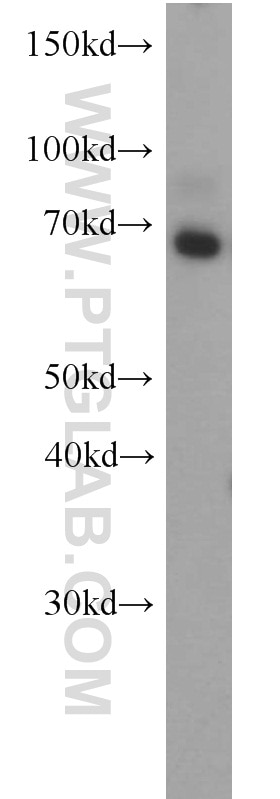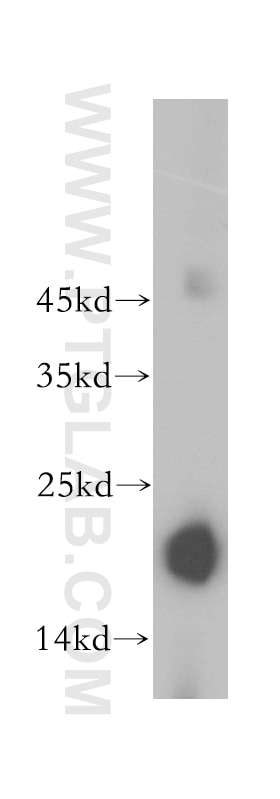- Phare
- Validé par KD/KO
Anticorps Polyclonal de lapin anti-QSOX1
QSOX1 Polyclonal Antibody for WB, IP, IF, IHC, ELISA
Hôte / Isotype
Lapin / IgG
Réactivité testée
Humain, rat, souris et plus (1)
Applications
WB, IHC, IF-P, IP, ELISA
Conjugaison
Non conjugué
N° de cat : 12713-1-AP
Synonymes
Galerie de données de validation
Applications testées
| Résultats positifs en WB | cellules SW-1990, tissu cardiaque de rat, tissu cardiaque de souris, tissu placentaire humain |
| Résultats positifs en IP | cellules SW-1990 |
| Résultats positifs en IHC | tissu de cancer du foie humain, il est suggéré de démasquer l'antigène avec un tampon de TE buffer pH 9.0; (*) À défaut, 'le démasquage de l'antigène peut être 'effectué avec un tampon citrate pH 6,0. |
| Résultats positifs en IF-P | tissu de côlon de souris, |
Dilution recommandée
| Application | Dilution |
|---|---|
| Western Blot (WB) | WB : 1:500-1:2000 |
| Immunoprécipitation (IP) | IP : 0.5-4.0 ug for 1.0-3.0 mg of total protein lysate |
| Immunohistochimie (IHC) | IHC : 1:50-1:500 |
| Immunofluorescence (IF)-P | IF-P : 1:50-1:500 |
| It is recommended that this reagent should be titrated in each testing system to obtain optimal results. | |
| Sample-dependent, check data in validation data gallery | |
Applications publiées
| KD/KO | See 1 publications below |
| WB | See 10 publications below |
| IHC | See 8 publications below |
| IF | See 3 publications below |
Informations sur le produit
12713-1-AP cible QSOX1 dans les applications de WB, IHC, IF-P, IP, ELISA et montre une réactivité avec des échantillons Humain, rat, souris
| Réactivité | Humain, rat, souris |
| Réactivité citée | rat, Humain, souris, Hamster |
| Hôte / Isotype | Lapin / IgG |
| Clonalité | Polyclonal |
| Type | Anticorps |
| Immunogène | QSOX1 Protéine recombinante Ag3396 |
| Nom complet | quiescin Q6 sulfhydryl oxidase 1 |
| Masse moléculaire calculée | 747 aa, 83 kDa |
| Poids moléculaire observé | 66-83kDa |
| Numéro d’acquisition GenBank | BC017692 |
| Symbole du gène | QSOX1 |
| Identification du gène (NCBI) | 5768 |
| Conjugaison | Non conjugué |
| Forme | Liquide |
| Méthode de purification | Purification par affinité contre l'antigène |
| Tampon de stockage | PBS avec azoture de sodium à 0,02 % et glycérol à 50 % pH 7,3 |
| Conditions de stockage | Stocker à -20°C. Stable pendant un an après l'expédition. L'aliquotage n'est pas nécessaire pour le stockage à -20oC Les 20ul contiennent 0,1% de BSA. |
Informations générales
QSOX1(Sulfhydryl oxidase 1) catalyzes the oxidation of sulfhydryl groups in peptide and protein thiols to disulfides with the reduction of oxygen to hydrogen peroxide.It has two isoforms with the molecular weight of 67 kda and 83 kDa,respectively. It is detected a band of 95 Kda in HT1080 cell lines (PMID:17331072).Isoform 1 is expressed on golgi apparatus membrane and isoform 2 is secreted (PMID:10708601). The isoform1(QSOX1a) is the full length of QSOX1, approximately 78 kd; and the isoform2(QSOX1b) is the splicing form, approximately 62kd(PMID:14633699; 2496424). QSOX1 is highly expressed in tumor cell lines but is not expressed in adjacent normal cells (PMID:21989104).
Protocole
| Product Specific Protocols | |
|---|---|
| WB protocol for QSOX1 antibody 12713-1-AP | Download protocol |
| IHC protocol for QSOX1 antibody 12713-1-AP | Download protocol |
| IF protocol for QSOX1 antibody 12713-1-AP | Download protocol |
| IP protocol for QSOX1 antibody 12713-1-AP | Download protocol |
| Standard Protocols | |
|---|---|
| Click here to view our Standard Protocols |
Publications
| Species | Application | Title |
|---|---|---|
Redox Biol Quiescin sulfhydryl oxidase 1 promotes sorafenib-induced ferroptosis in hepatocellular carcinoma by driving EGFR endosomal trafficking and inhibiting NRF2 activation. | ||
Breast Cancer Res High expression of QSOX1 reduces tumorogenesis, and is associated with a better outcome for breast cancer patients. | ||
Breast Cancer Res Expression of quiescin sulfhydryl oxidase 1 is associated with a highly invasive phenotype and correlates with a poor prognosis in Luminal B breast cancer. | ||
Mod Pathol QSOX1 expression is associated with aggressive tumor features and reduced survival in breast carcinomas. | ||
